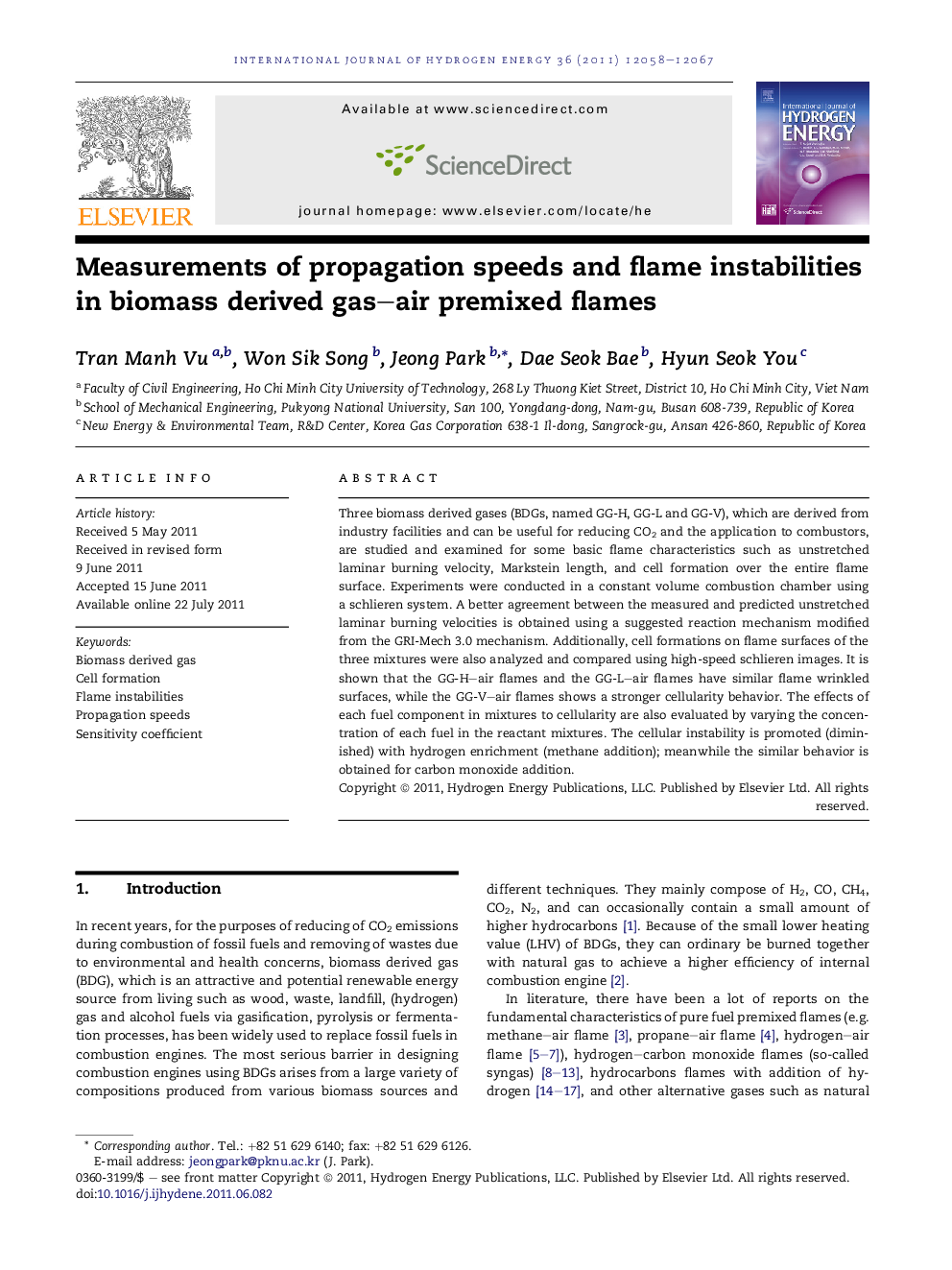| Article ID | Journal | Published Year | Pages | File Type |
|---|---|---|---|---|
| 1275897 | International Journal of Hydrogen Energy | 2011 | 10 Pages |
Three biomass derived gases (BDGs, named GG-H, GG-L and GG-V), which are derived from industry facilities and can be useful for reducing CO2 and the application to combustors, are studied and examined for some basic flame characteristics such as unstretched laminar burning velocity, Markstein length, and cell formation over the entire flame surface. Experiments were conducted in a constant volume combustion chamber using a schlieren system. A better agreement between the measured and predicted unstretched laminar burning velocities is obtained using a suggested reaction mechanism modified from the GRI-Mech 3.0 mechanism. Additionally, cell formations on flame surfaces of the three mixtures were also analyzed and compared using high-speed schlieren images. It is shown that the GG-H–air flames and the GG-L–air flames have similar flame wrinkled surfaces, while the GG-V–air flames shows a stronger cellularity behavior. The effects of each fuel component in mixtures to cellularity are also evaluated by varying the concentration of each fuel in the reactant mixtures. The cellular instability is promoted (diminished) with hydrogen enrichment (methane addition); meanwhile the similar behavior is obtained for carbon monoxide addition.
► Unstretched laminar burning velocities of the three BDGs–air flames are studied. ► Markstein lengths, cellular instabilities of the three BDGs–air flames are studied. ► A suggested reaction mechanism modified from the GRI-Mech 3.0 mechanism is proposed. ► Cell formations on flame surfaces of the three BDGs–air flames are analyzed. ► The effects of each fuel component in mixtures to cellularity are evaluated.
